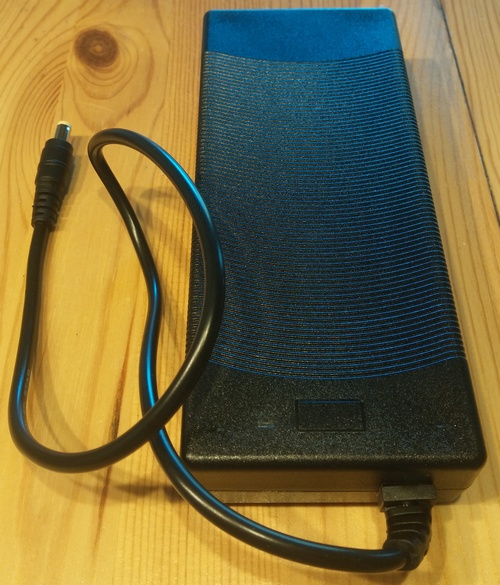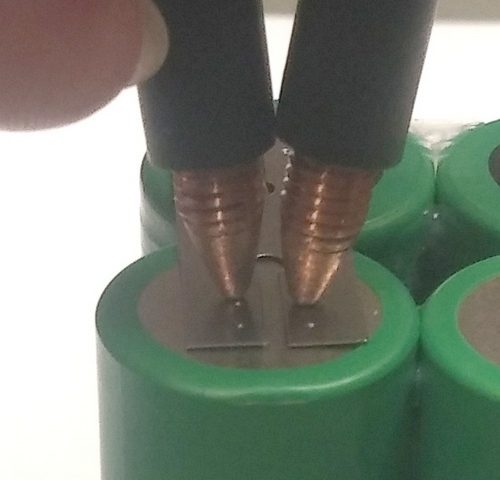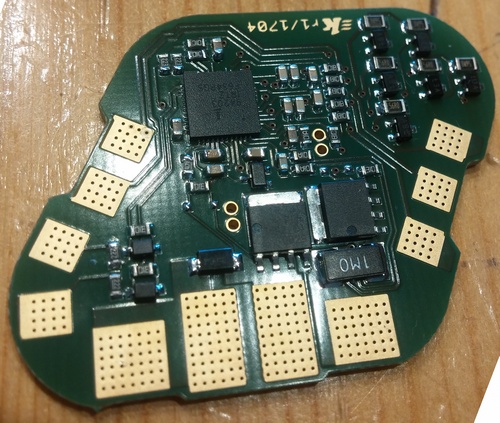
First charger prototypes arrived!
2017-05-23kWeld rev.3 is in production!
2017-11-03This post will be regularly updated with new results that have been collected by me, and also by my kWeld customers.
The following high current power supplies have been tested with the kWeld system and can be recommended:
- Turnigy nano-tech 3S/5000mAh/130C Lithium Polymer battery (link or link). I have stress tested one of them for several complete discharge cycles, and it shows no visible swell thereafter. The measured current is 1300-1500 amperes.
- Ultracell UXL65-12 (link). According to feedback from a user, the current reported by kWeld is approx 1000A when tested with 0.15mm nickel strips.
IMPORTANT: Lithium Polymer batteries are potentially dangerous. If they fail internally, they can spontaneously self-ignite. It is therefore strongly advised to permanently supervise them during use and also while charging them, and to store them in a fire safe container when not using them.



5 Comments
Would using a 15V supercapacitor of 1F work?
What is the minimum voltage succesful welds can be made?
i am working on a capacitor based supply for the welder, it will be based on 6x BCAP0310 supercapacitors (3S2P configuration). This is the minimum that is needed to allow welds of up to 100J (needed for 0.3mm nickel strips).
It is less a matter of voltage (a few volts would be enough) than of amperage. 1000A is a good starting point for thinner weld material (up to 0.15mm). The system was designed for 1500A current, and it has an overcurrent switch at 2000A.
does anyone know how to connect a regular desktop atx power supply to the kweld ksupply? Preferably with pictures.
would a regular lead acid battery with 340cca/420ca work for the ke weld?
When you draw much current a lead acid battery has the tendency to start gassing and the resistance will start going up very rapidly => making the voltage dropping very rapidly. If you let the battery rest for a while you will see the voltage slowly climbing again, so recovering. Lead acid batteries are generally made for a average load of only 0.1 C, so 1/10 of the capacity of the battery. Short bursts like the starter of a motor is actually already to much to be good. The efficiency of a lead acid battery goes down in a exponential way as soon as you go over this limit of 0.1 C. The website Battery university is a good site to understand more about the different kind of batteries. I would say if you want to do a few welds only you could try but max. 400 Amps or so. But I warn you, your battery is going to have way much less capacity than stated. The amperage that small LiPo batteries can deliver is huge compared to any other battery. And the internal resistance is very low and doesn’t rise like with a lead acid.